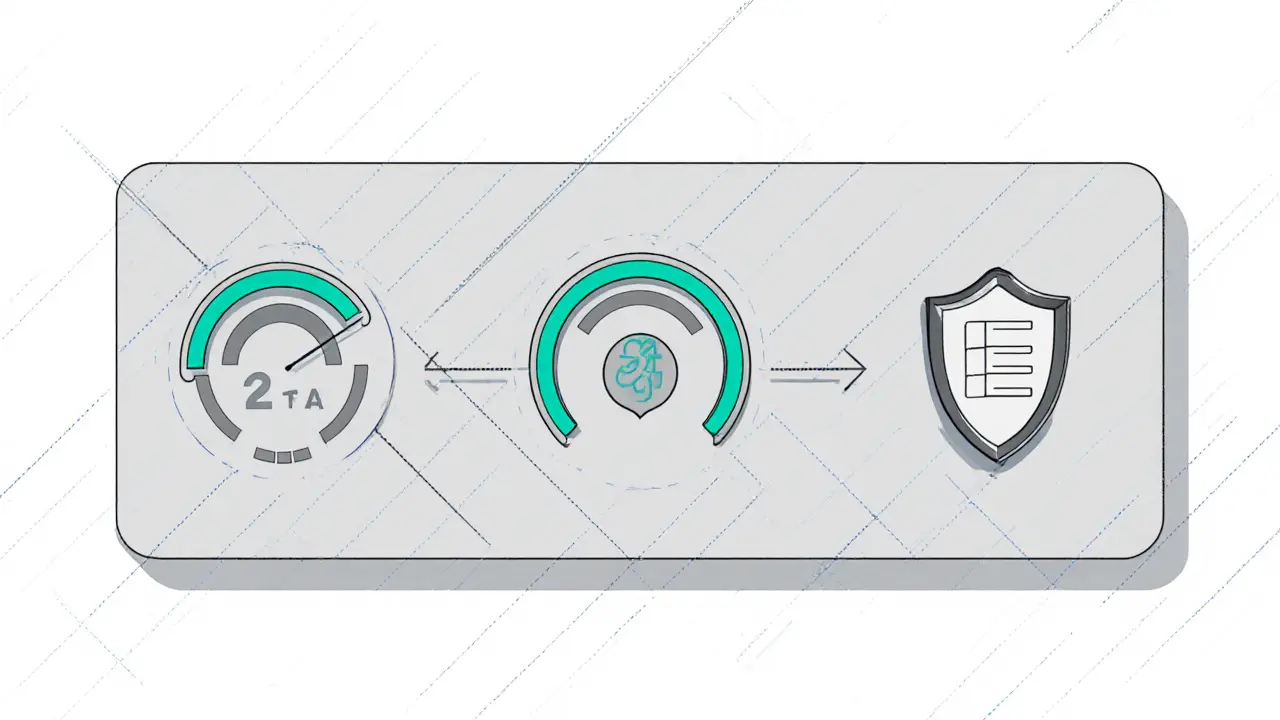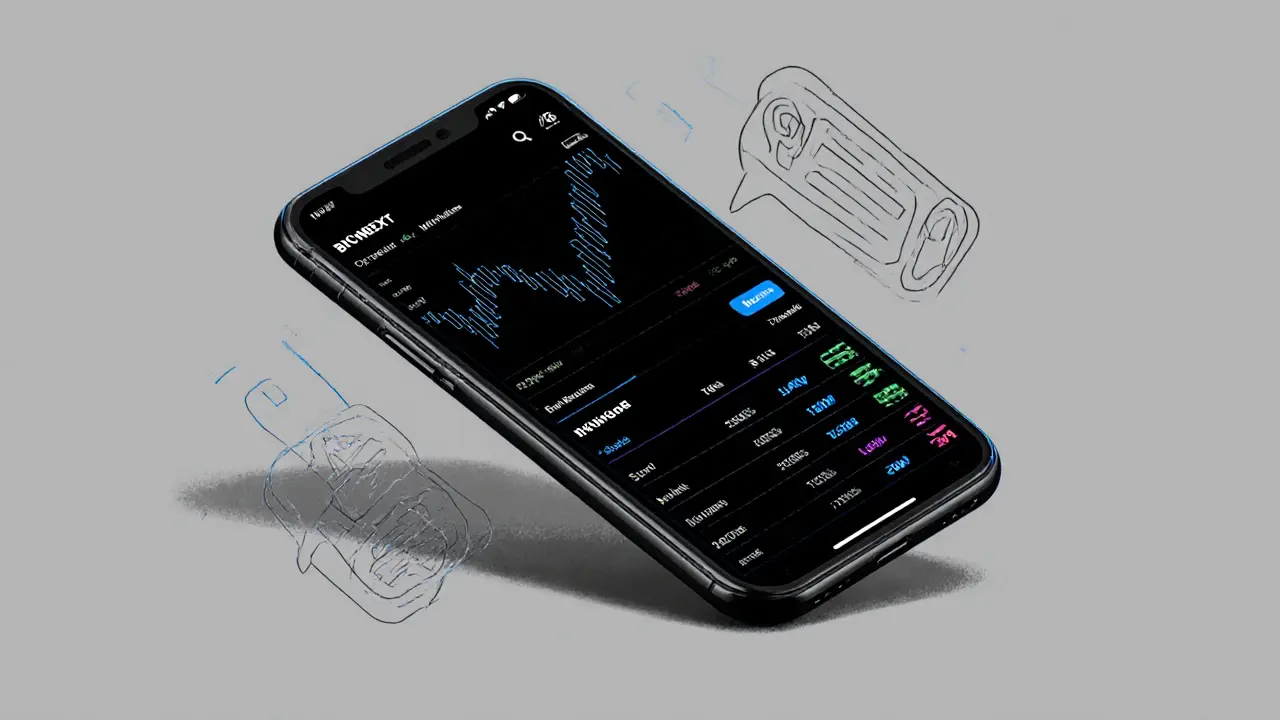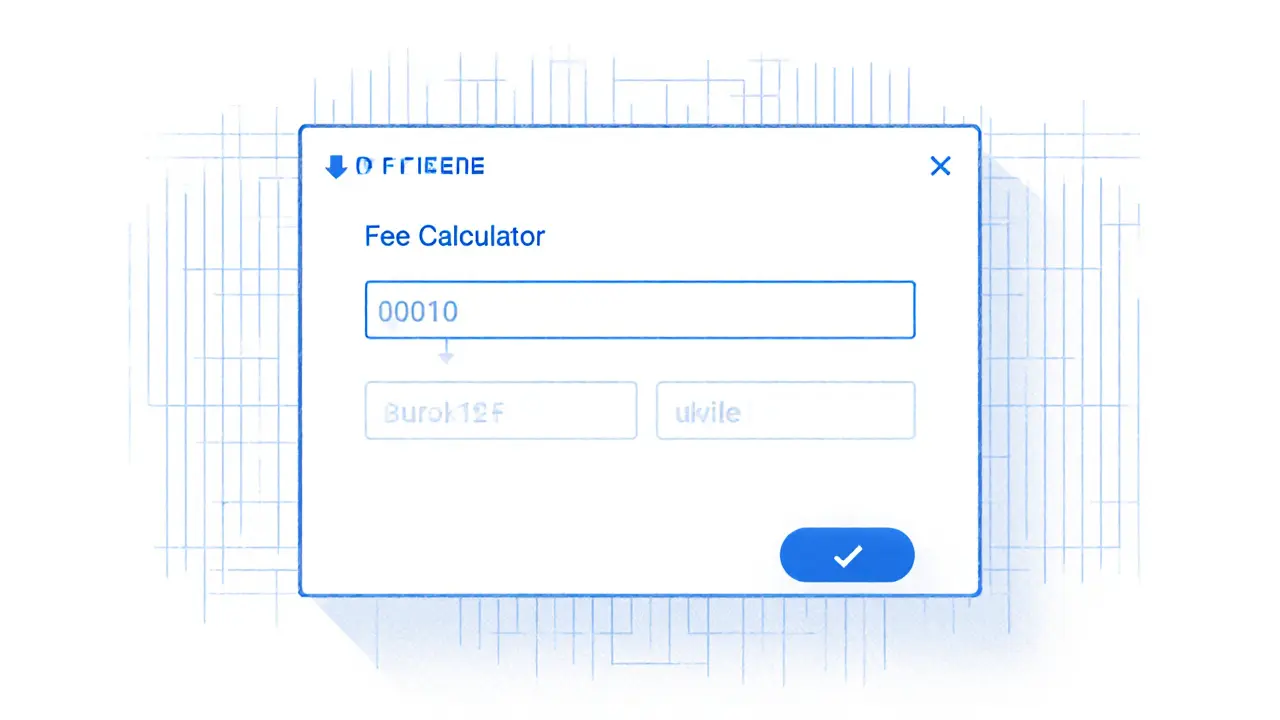BTCNEXT Fee Calculator
Estimate Your Trading Fees
Enter your monthly trading volume and select your trading type to calculate potential fees on BTCNEXT Exchange.
Estimated Monthly Fees
Fee Comparison Table
Compare BTCNEXT fees with major exchanges.
| Exchange | Spot Fee (M/T) | Futures Fee (M/T) | Volume Discount |
|---|---|---|---|
| BTCNEXT | 0.12% / 0.20% | 0.04% / 0.08% | Maker down to 0.04% with $1M+ volume |
| Binance | 0.10% / 0.10% | 0.02% / 0.04% | Maker down to 0.02% with $100K+ volume |
| Coinbase | 0.50% / 0.50% | 0.20% / 0.20% | No volume discount |
| Kraken | 0.16% / 0.26% | 0.02% / 0.05% | Maker down to 0.00% with $100K+ volume |
Quick Summary
- BTCNEXT launched in 2023 and targets both retail and institutional traders.
- Security relies on cold storage, 2FA, and regular audits, but the exchange is not yet regulated in major jurisdictions.
- Spot fees start at 0.12% maker / 0.20% taker; futures fees can be as low as 0.04%.
- Supports 150+ coins, including most major DeFi tokens, but lacks some niche assets.
- Mobile app is solid, yet customer support response times can be slow during peak periods.
What Is BTCNEXT Exchange?
When it comes to crypto trading, BTCNEXT Exchange is a digital asset platform that entered the market in early 2023, positioning itself as a low‑fee alternative for spot and derivatives trading. The platform advertises a sleek UI, deep liquidity on major pairs, and a suite of advanced order types aimed at day‑traders. Although the brand is relatively new, it already claims over 500,000 registered users worldwide.
Security Measures and Regulatory Standing
Security is the first thing any trader checks, and BTCNEXT tries to stay competitive. The exchange stores roughly 92% of user funds in offline cold wallets, a practice mirrored by industry leaders. Two‑factor authentication (2FA) is mandatory for withdrawals and can be set up via SMS, email, or authenticator apps. Additionally, the platform underwent a third‑party penetration test in Q22024, uncovering no critical vulnerabilities.
On the regulatory front, BTCNEXT is incorporated in the Seychelles and holds a virtual asset service provider (VASP) licence from the local financial authority. However, it is not registered with regulators in the U.S., EU, or Japan, which means U.S. persons are officially barred from using the service. KYC/AML compliance requires a photo ID, proof of address, and a selfie verification step. While this satisfies basic anti‑money‑laundering standards, the lack of wider licensing may be a red flag for risk‑averse investors.
Fee Structure: How Much Does Trading Cost?
BTCNEXT markets itself as a low‑cost venue. Its spot fee schedule starts at 0.12% maker and 0.20% taker for volumes under $10,000 per month. Volume discounts kick in at higher tiers, dropping maker fees to 0.04% for traders moving $1million+ each month. Futures fees are even more aggressive, with maker rates as low as 0.02% and taker at 0.04% on select contracts.
Deposits are free via cryptocurrency, while fiat deposits (via bank transfer) incur a 0.5% surcharge. Withdrawal fees are tiered by asset: Bitcoin withdrawals cost 0.0004BTC, Ethereum 0.005ETH, and stablecoins like USDC are a flat $1. These fees are competitive but slightly higher than the absolute cheapest tier on Binance.

Supported Cryptocurrencies and Liquidity Depth
As of October2025, BTCNEXT lists 152 trading pairs, covering the top 20 market‑cap coins, most DeFi tokens, and several emerging layer‑2 assets. The exchange has partnered with several market‑making firms, ensuring average daily volumes of $800million on BTC/USDT and $350million on ETH/USDT.
Liquidity is solid for major pairs but thinens on smaller altcoins. For example, a trade of 10,000XRP may experience a 0.15% slippage, whereas the same size on Binance would slip less than 0.05%.
User Experience: Web Platform, Mobile App, and Support
The web UI follows a clean dark‑mode aesthetic with customizable dashboards. Advanced traders appreciate the built‑in charting library, which supports over 100 technical indicators. Mobile app is available on iOS and Android, offering full spot and futures functionality, push notifications for price alerts, and biometric login. In independent tests, the app’s order execution latency averaged 210ms, a respectable figure for a mid‑size exchange.
Customer support is delivered through a ticket system, live chat (available 9am-6pm GMT), and a community Discord. Response time averages 45minutes during off‑peak hours but can stretch beyond 2hours during high‑traffic events like major ETH upgrades.
How Does BTCNEXT Stack Up Against the Big Players?
| Feature | BTCNEXT | Binance | Coinbase | Kraken |
|---|---|---|---|---|
| Founded | 2023 | 2017 | 2012 | 2011 |
| Regulatory Licence | Seychelles VASP | Multiple (including Malta, US) | U.S. Money‑Transmitter | EU & US Registrations |
| Spot Fees (Maker/Taker) | 0.12% / 0.20% (base) | 0.10% / 0.10% (base) | 0.50% / 0.50% (base) | 0.16% / 0.26% (base) |
| Futures Fees (Maker/Taker) | 0.04% / 0.08% | 0.02% / 0.04% | 0.20% / 0.20% | 0.02% / 0.05% |
| Supported Coins | 150+ | 600+ | 250+ | 200+ |
| Cold Storage % | 92% | 98% | 95% | 96% |
| Mobile App Rating (Google Play) | 4.3 | 4.6 | 4.5 | 4.4 |
| Customer Support Hours (GMT) | 9am-6pm | 24/7 | 24/7 | 24/7 |
From the table you can see that BTCNEXT offers competitive fees and decent security, but it falls short on regulatory breadth and asset variety compared with the industry giants.
Pros, Cons, and Ideal Users
Pros
- Low spot and futures fees, especially for high‑volume traders.
- Strong cold‑storage ratio and regular security audits.
- Responsive web UI and feature‑rich mobile app.
- Decent liquidity on major pairs.
Cons
- Limited regulatory coverage; not suitable for users needing U.S. or EU‑licensed platforms.
- Customer support not 24/7, leading to slower resolutions during market spikes.
- Asset list smaller than top exchanges, missing some niche DeFi tokens.
Best For
- Experienced traders looking for lower fees on spot and futures.
- Residents of regions where the exchange is legally permitted (e.g., Asia‑Pacific, Africa).
- Users comfortable with self‑service support channels.
Final Verdict
If you prioritize low‑cost trading and are comfortable with a platform that isn’t fully regulated in the West, BTCNEXT is a solid middle‑ground choice. It offers strong security, a clean interface, and a respectable range of assets. However, for newcomers, U.S. or EU users, or anyone who needs round‑the‑clock support, sticking with a fully licensed exchange might be wiser.

Frequently Asked Questions
Is BTCNEXT regulated in my country?
BTCNEXT holds a VASP licence from the Seychelles, which is recognized by several jurisdictions but not by U.S., EU, or Japanese regulators. Residents of those regions are officially barred from using the platform.
How secure is my crypto on BTCNEXT?
The exchange stores about 92% of user funds in cold wallets, requires 2FA for withdrawals, and undergoes regular penetration testing. While no platform is 100% hack‑proof, BTCNEXT’s security practices align with industry standards.
What are the withdrawal fees for major coins?
Bitcoin withdrawals cost 0.0004BTC, Ethereum costs 0.005ETH, and stablecoins like USDC have a flat $1 fee. Fees are competitive but can be higher than the cheapest tiers on larger exchanges.
Can I trade futures on BTCNEXT?
Yes, BTCNEXT offers perpetual futures on major pairs such as BTC/USDT and ETH/USDT with maker fees as low as 0.04% and taker fees at 0.08% for most contracts.
How good is the mobile app?
The iOS and Android apps provide full spot and futures trading, push price alerts, and biometric login. In latency tests, order execution averaged about 210ms, which is solid for a mid‑size exchange.

